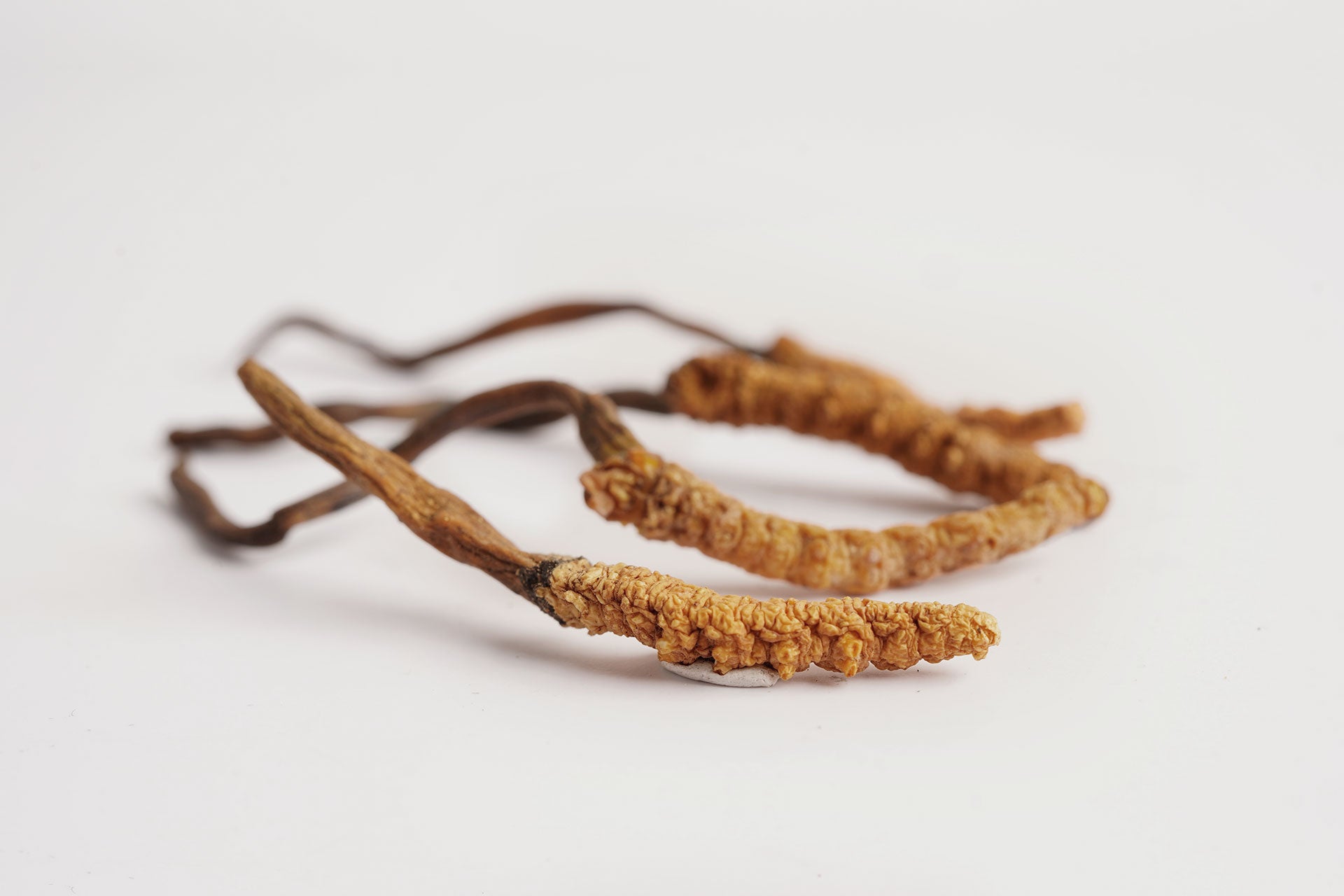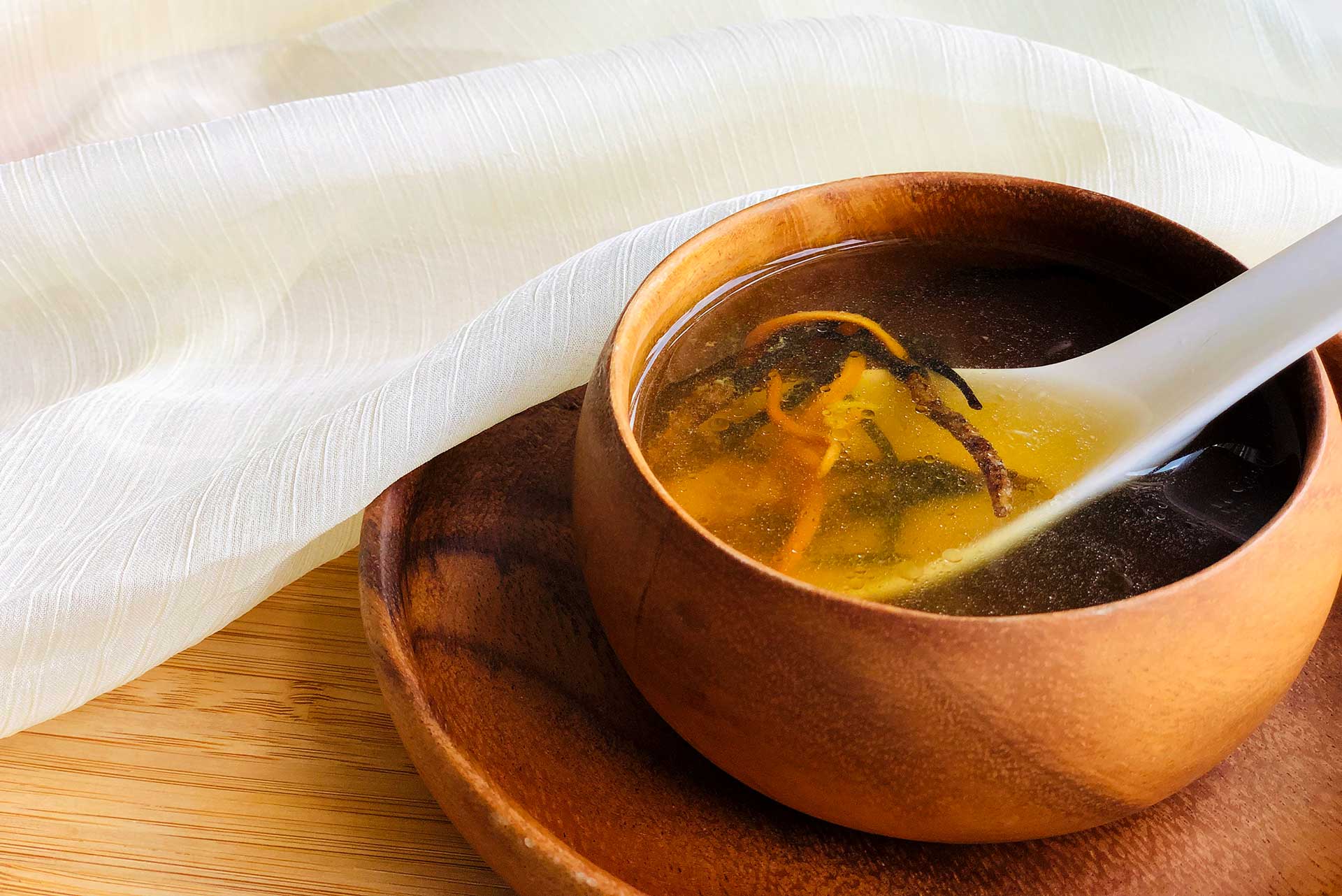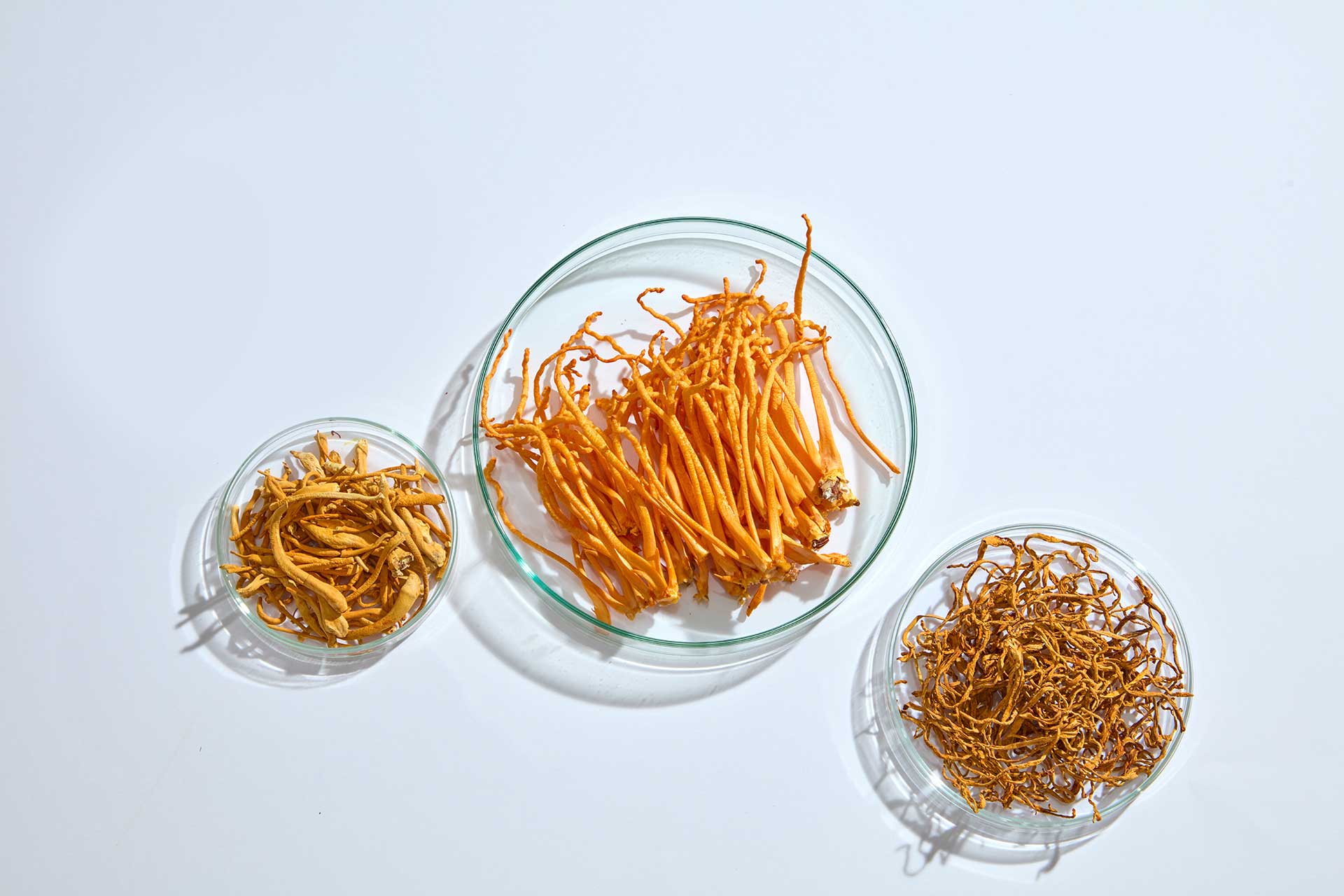Cordyceps vs Cordyceps Flower: Differences, Benefits & Usage
5 min read
·
By Wing Joo Loong Team
Key Takeaways
- There are two common cordyceps used in Traditional Chinese Medicine (TCM), namely cordyceps sinensis and cordyceps militaris.
- Cordyceps sinensis (冬虫夏草 dōng chóng xià cǎo) is a prized health tonic found at high altitudes 3,500 above sea level. It is known to strengthen lungs and kidneys, reduce fatigue and enhance immunity.
- Meanwhile, cordyceps militaris (虫草花 chóng cǎo huā) is not a flower, but a mushroom. It supports immunity and promotes heart health by improving blood lipid (fat) levels.
- Cordyceps flower is suitable for all ages when consumed in moderation. Cordyceps sinensis, on the other hand, should be consumed with care by pregnant and postpartum women, as well as young children, who are advised to follow recommended guidelines before use.
Cordyceps. Killer fungi. Zombie fungus. Cordyceps may be a rising buzzword in Western wellness and mainstream communities. However, it is actually a tonic herb with deep roots in Traditional Chinese Medicine (TCM) for centuries.
Today, we spotlight the two most common herbs in this family used for their medicinal properties — cordyceps sinensis and cordyceps militaris. Learn the nature of cordyceps flower vs cordyceps, discern their differences, explore their benefits and get dietary ideas on integrating them into your daily wellness routine.
What Is Cordyceps Sinensis

Cordyceps sinensis, commonly known as the caterpillar fungus or 虫草 (chóng cǎo) / 冬虫夏草 (dōng chóng xià cǎo), is the variety most familiar to us. It is named one of the three most treasured tonics in TCM, alongside ginseng and deer antlers.
Originating from high-altitude, mountainous regions of Asia like Qinghai and Tibet, it is found between 3,500 to 6,000 metres above sea level. Wild cordyceps is a resilient fungus, thriving in challenging conditions. The mushroom spores parasitise ghost moth (hepialus varians staudinger) larvae, transforming them into fruiting bodies. It has earned the moniker 'Himalayan Gold' due to its labour-intensive, limited harvest and potent therapeutic properties.
Benefits of Cordyceps Sinensis
In TCM, cordyceps sinensis is classified as a herb that is slightly warm in nature. Besides being a general health tonic, this harmonious herb boasts an array of rich medicinal benefits such as:
- Strengthening respiratory function through enhanced oxygen utilisation and cellular oxygen uptake, resolving phlegm, relieving shortness of breath and reducing lung inflammation
- Relieving fatigue and treating lack of energy and strength after a severe illness
- Boosting stamina and physical endurance
- Strengthening the immune system
- Combating oxidative stress and replenishing kidney essence, thereby slowing down aging
- Enhancing normal kidney function
- Regulating blood glucose metabolism, thereby reducing blood sugar levels.
- Treating deficiency in kidney Yang and blood to address impotence, nocturnal emission (wet dreams) and soreness of lower back and knees
How To Eat Cordyceps Sinensis

There are several ways to incorporate cordyceps sinensis into your diet. The most commonplace approach involves grinding dried wild cordyceps into powder*, which can then be encapsulated or added into soups and drinks conveniently. In powdered form, you may take 200mg to 400mg each day (1-2 capsules).
Alternatively, explore these cordyceps recipe ideas:
- Steep 1-3g in a small pot of hot water to make tea. If you’re using the whole, dried cordyceps sinensis, feel free to refresh the pot several times till the mildly sweet, herbal taste has faded, then consume the fungus
- Boil as a decoction (1-3g)
- Cook in soups and porridge. Either add it to your savoury chicken soup, or double-boil with bird's nests as a dessert
- Infuse in ready-to-drink tonics, such as chicken essence or medicinal liquor
- Grind into powder and add to your drinks, such as warm water, milk, soy milk and juice
Children aged 3-7 can take half of the recommended amount, 2-3 times a month, to support overall immunity and lung health.
*Free grinding services for wild cordyceps are available at all WJL stores.
What Is Cordyceps Flower

Contrary to its name, cordyceps flower (cordyceps militaris) is not actually the flower of cordyceps sinensis. Also referred to as 虫草花 (chóng cǎo huā), which literally translates to worm-grass flower, it is neither of those things but an actual mushroom.
Cordyceps militaris can be cultivated in a controlled environment, where mushroom spores are planted onto grains. This process enabled the mass production of cordyceps militaris and made it much more affordable.
Benefits of Cordyceps Flower
Cordyceps flowers not only contribute a vibrant pop of colour and an extra layer of flavour to your dishes but also offer valuable nutritional benefits in various areas:
- Strengthening the immune and respiratory system
- Boosting Qi
- Improving blood circulation
- Promoting healthy cholesterol levels
- Regulating blood sugar level
- Nourishing the kidneys
How To Eat Cordyceps Flower
As a type of mushroom, raw cordyceps flowers are commonly cooked in soups with other herbs for consumption. They are rarely eaten raw, although some supplements in the market may grind the fungi into powder for capsulation. A classic cordyceps flower recipe is the American ginseng and cordyceps flower soup.
Here are some other simple recipe ideas to enjoy this tasty mushroom:
Who Can Take Cordyceps and Cordyceps Flower?

Both cordyceps are generally suitable for supporting the overall wellness of most people. Cordyceps flower can be freely enjoyed in moderation for all ages, and wild cordyceps are exceptionally good tonics for the elderly to strengthen their respiratory vitality and immunity.
However, the following groups could take special note when consuming wild cordyceps (cordyceps sinensis):
During Pregnancy and Postpartum
Wild cordyceps are generally considered safe for consumption during the second trimester of pregnancy when consumed in moderation. However, it is advisable to avoid consuming at least 1 month before the EDD.
Postpartum new moms can enjoy wild cordyceps, as found in premium confinement soups to fortify physical recovery and boost vitality.
For Young Children (Ages 3–7)
Children with weak respiratory function, chronic coughs and a low immune system can consider a moderate intake of wild cordyceps to aid recovery and strengthen the body. It is advisable to start with half of the adult dosage and double boil with meat to make soups for 2-3 times a month.
For children with respiratory function disorders such as asthma or a low immune system, consulting a certified TCM physician for a more tailored approach is advisable.
Social With Us
Interested to learn more about superfoods? Join our tribe on social media through Instagram, Facebook, TikTok or Xiaohongshu.
The information above serves as a general guide only. Please consult a certified TCM practitioner should you require advice tailored to your specific health needs and concerns.
The information above serves as a general guide only. Please consult a certified TCM practitioner for a more accurate diagnosis and treatment.
Subscribe to our latest news and
exclusive promotions!
Subscribe to our latest news and
exclusive promotions!
Subscribe to our latest news and exclusive promotions!
Women's Health
Uterus Health
Pain Management
You may also like
JOIN OUR MAILING LIST
Get wellness tips and the inside scoop
on new launches and deals!

© 2025 Wing Joo Loong

